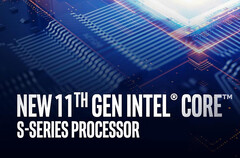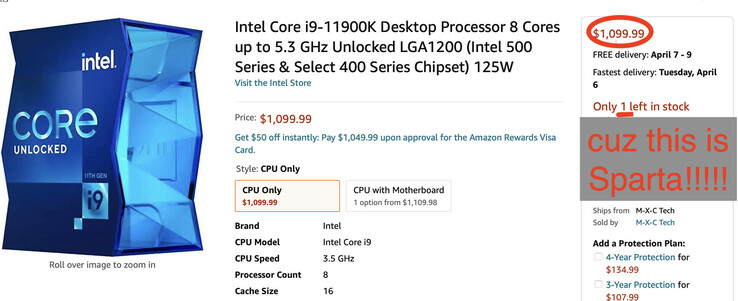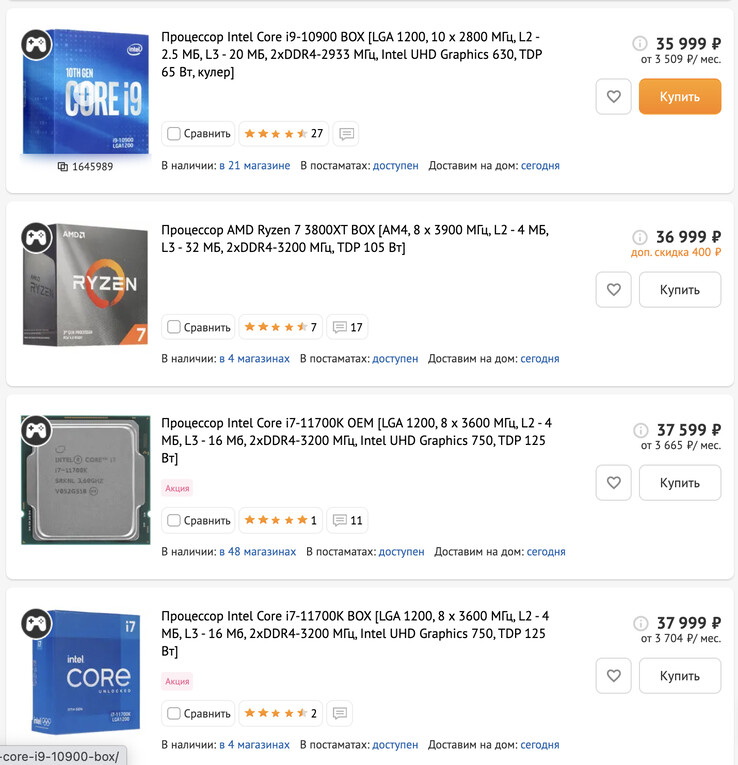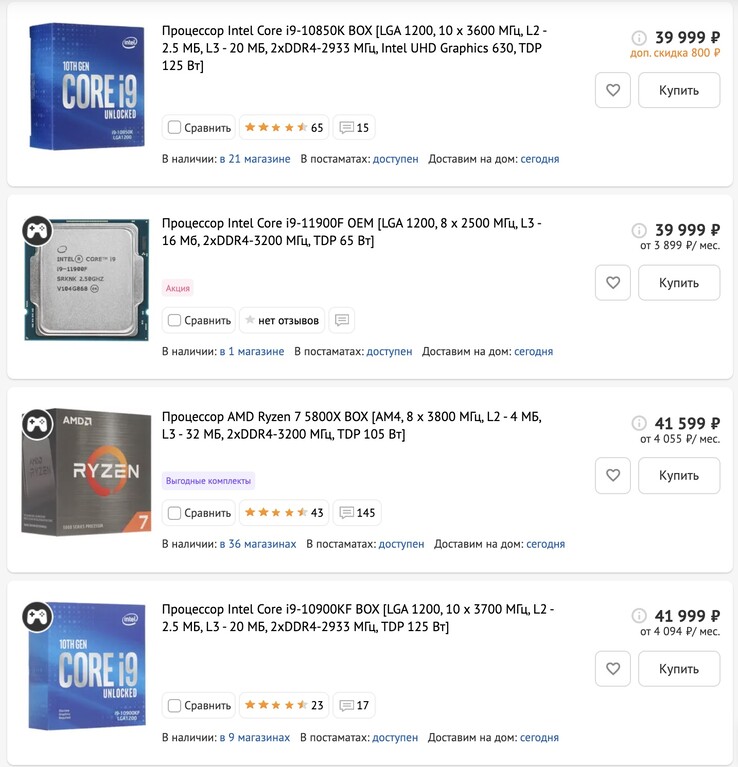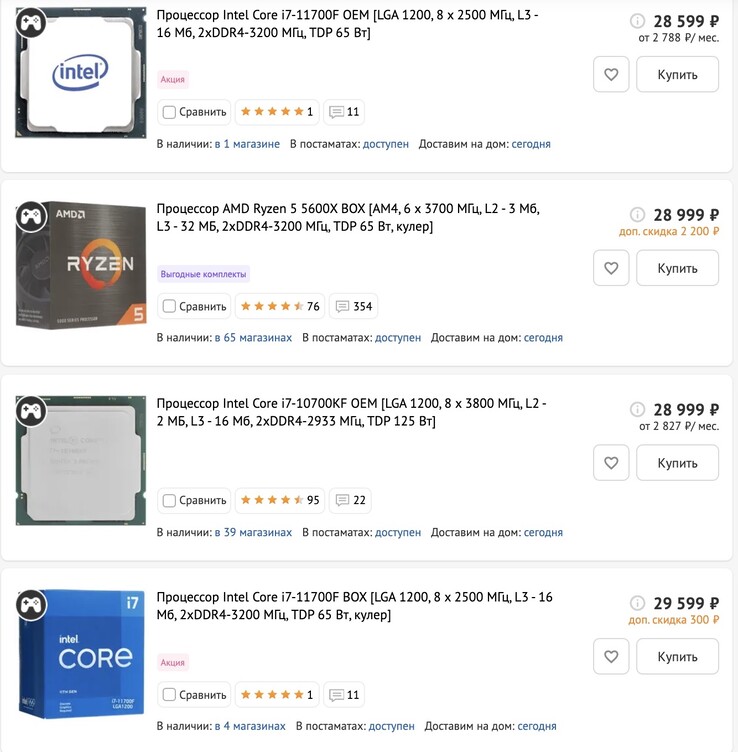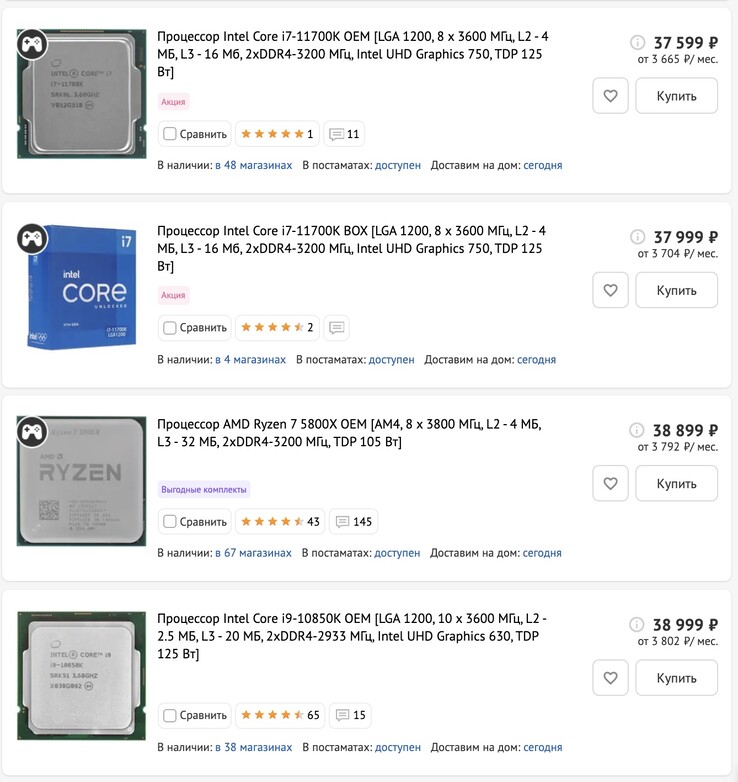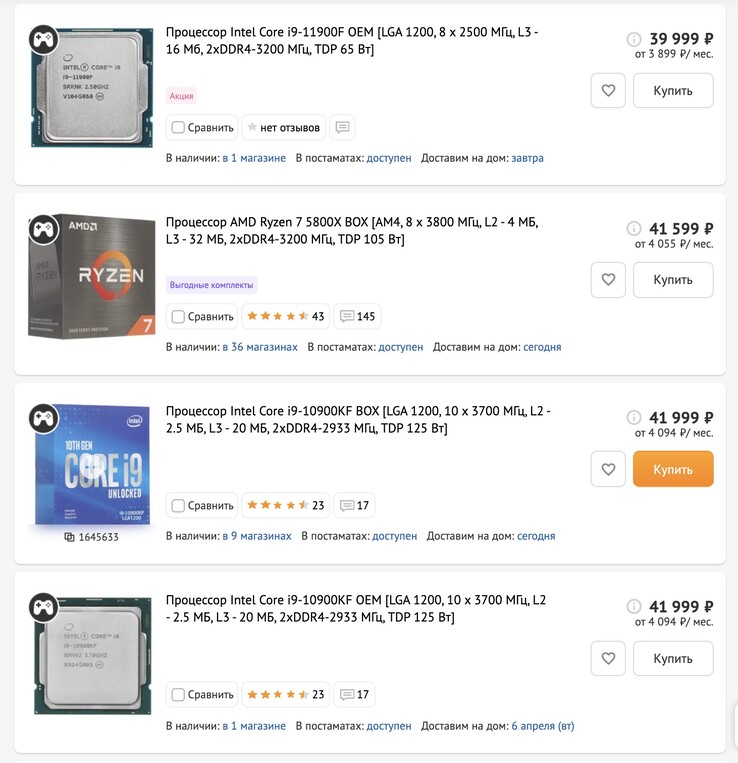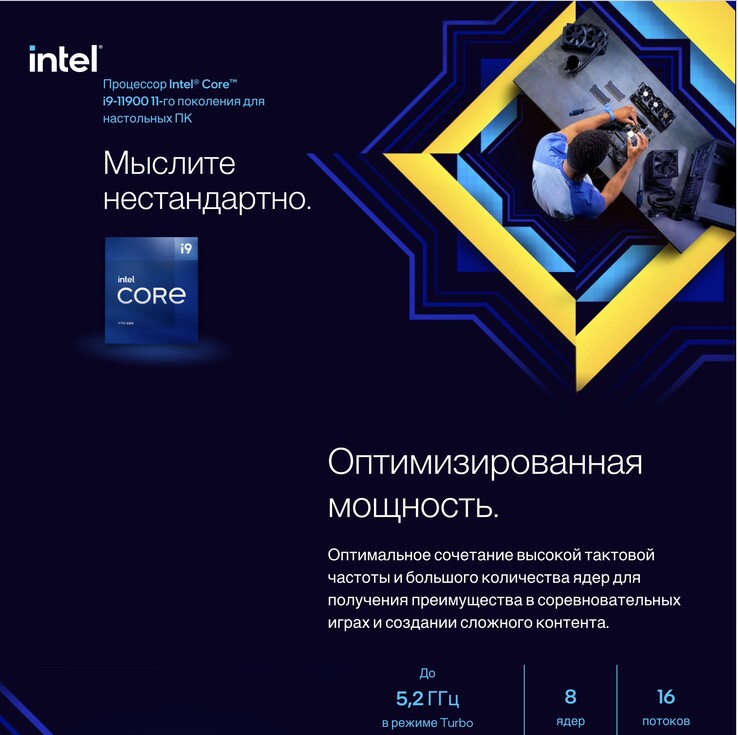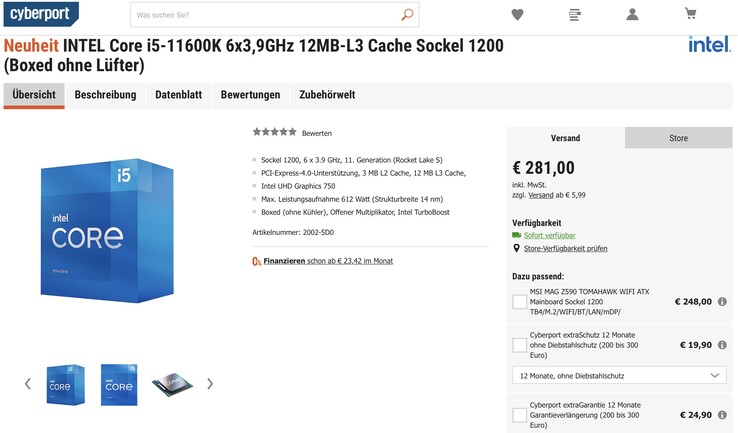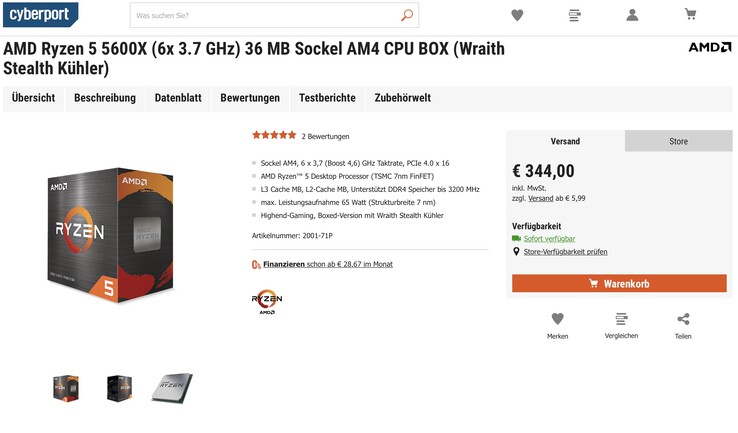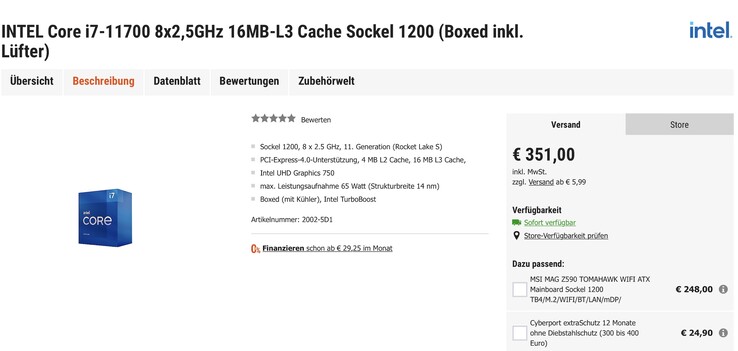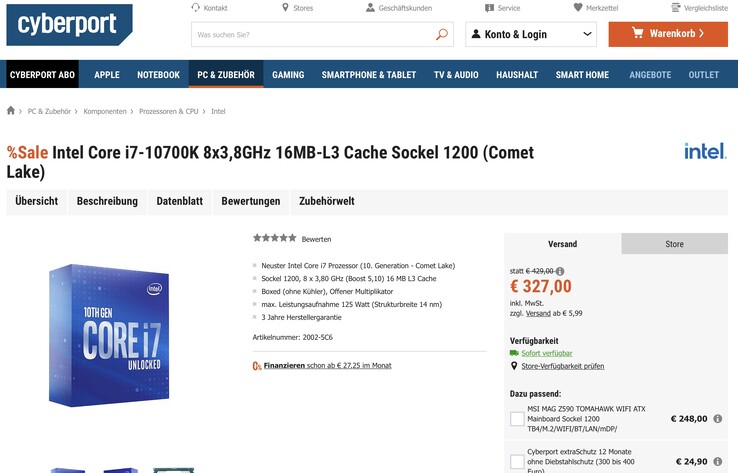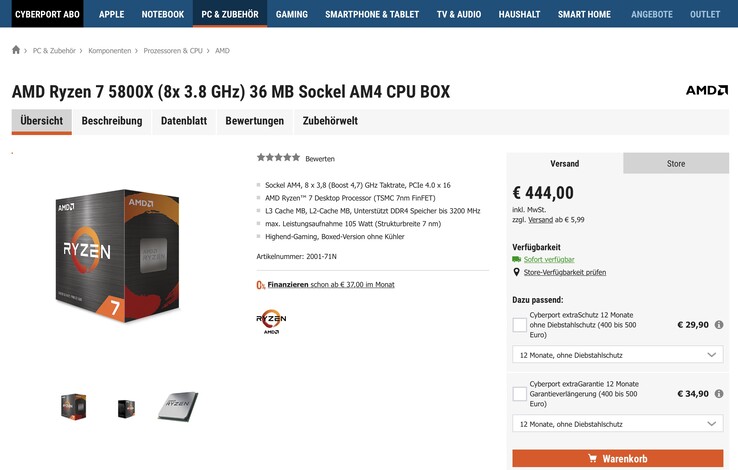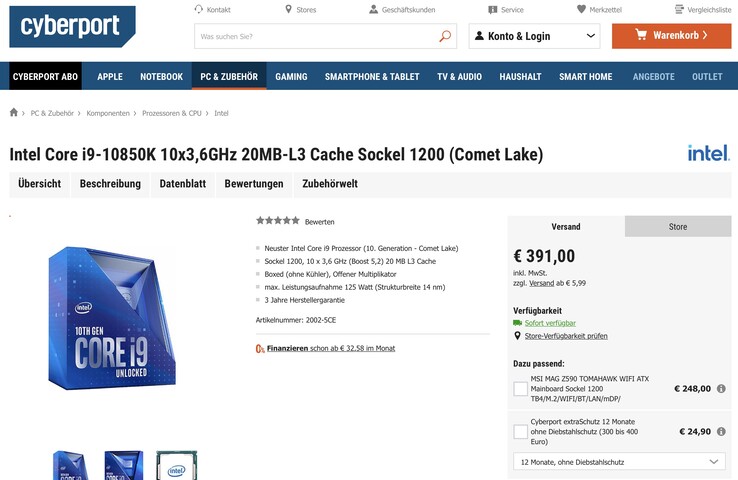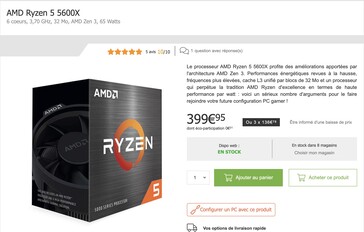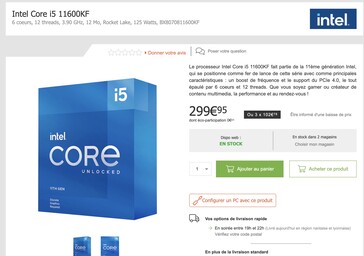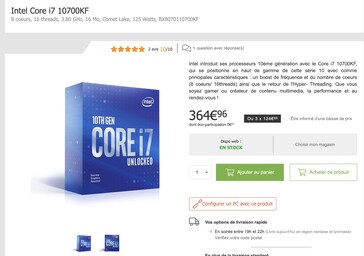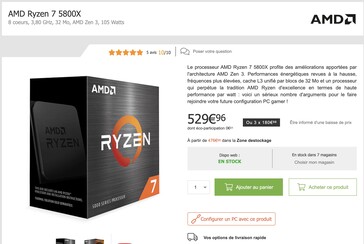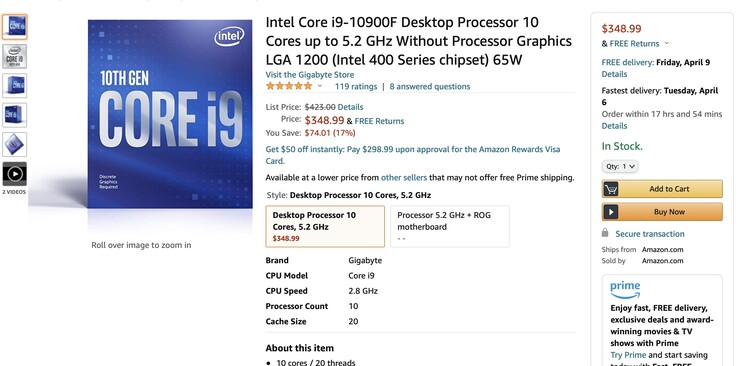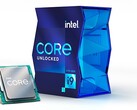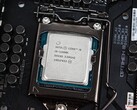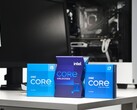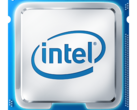Intel just released its 11th Gen processors. You can check out our review of the Rocket Lake-S chips here. In short, the new processors offer up to 20% more performance than the last-generation parts in certain workloads but fail to definitively best AMD’s Zen 3 offerings on any meaningful level. This is why the release of these CPUs might seem puzzling to some, but I think there is a method to Intel’s madness.
Over the last year, the PC hardware world has been shaken by what can only be described as massive supply shortages. Very high demand, which was spurred on by a global pandemic, was part of the problem. Over-reliance on a few global foundries such as TSMC and Samsung Foundry was another facet of the issue. However, while most semiconductor companies were struggling to keep up with demand, Intel seemed to be doing fine, supply-wise. And this is how Intel has found itself in a position that it is in right now: Currently, Intel is offering significantly better-priced consumer products than AMD, its main competitor in the CPU space.
In this piece, I would like to present to you the current pricing of gaming Intel and AMD CPUs in France, Germany, Russia and the US. What this exercise will reveal is that Intel’s current pricing is more competitive than AMD’s in the key Western markets. The reason for this is that Intel is able to keep up with demand much better than AMD. All of the recently released Intel chips are in stock and readily available, while AMD’s most competitive offerings, the latest Ryzen 9 processors, are really hard to come by in the West. However, things are even worse for AMD when it comes to its mid-range consumer offerings, because its latest Ryzen 5 and Ryzen 7 CPUs are significantly overpriced when compared to similarly capable Intel counterparts. What is more, it is becoming increasingly clear that Intel has decided to start competing against itself, since Intel’s 11th Gen CPUs are very comparable in terms of value to the now lower-priced 10th Gen parts. Some say that this is madness, but I think there is a method to this madness, but more on that point later. First, let us look at the current CPU pricing situation in the aforementioned countries. All of the retailers that I have chosen for this comparison sell CPUs online, meaning that anyone in their respective country can relatively easily purchase a CPU through these retailers.
We are going to start with a major Russian retailer known as DNS. It sells PC hardware and pre-builds. You can buy a CPU online from this retailer in any major Russian city.
In the screenshot below, you can see that the Intel Core i9-10900 has a lower price tag than the significantly less capable AMD Ryzen 7 3800XT. As a matter of fact, the Ryzen 7 3800XT costs slightly more than the new Intel Core i7-11700K (OEM). This is an example of Intel competing against itself, since the last-generation AMD chip is basically irrelevant and therefore can be taken out of the equation. You can click here to go to DNS’s website, if you want to see how other AMD and Intel chips are positioned in Eastern Europe.
And it is not only the Ryzen 7 3800XT that is not optimally positioned on DNS's website. The Ryzen 7 5800X is also in a bit of a bind, since it has to compete against the 10th Gen deca-core Intel CPUs.
In the following screenshot you can see how AMD's Ryzen 5 5600X is positioned on DNS's website. The hexa-core 5600X is competing against the octa-core i7-10700KF and the new i7-11700F.
Here is another screenshot to demonstrate how Intel positions its CPUs, at least when it sells them to its largest retail partners/pre-builders. The Ryzen 7 5800X (OEM) has a very similar price tag to the Core i9-10850K (OEM) on DNS’s website.
Another noteworthy observation of mine is that DNS is currently not selling the outrageously overpriced Core i9-11900K, which says a lot about the Core i9-11900K. Howbeit, DNS does offer the Intel Core i9-11900, likely because Intel pays DNS for the inclusion of its promotion material. So, it is more of a marketing exercise than a CPU selling exercise for DNS. But the fact that the Core i9-11900K did not make the cut at one of the largest hardware retailers/pre-builders in Russia is quite telling.
Now we are going to take a look at the CPU pricing in Germany and France. Since the positioning of Intel and AMD CPUs in the two aforementioned countries is quite similar to what we have seen in Russia, I am just going to quickly breeze through a few notable comparisons.
Intel’s new six-core flagship Core i5-11600K (no cooler) sells for 281 Euros (~$330) on cyberport.de.
The AMD Ryzen 5 5600X (with the cooler) currently goes for 344 Euros (~$400) on cyberport.de.
The new Intel Core i7-11700 (with the cooler) retails for 351 Euros (~$410) on cyberport.de.
The Intel Core i7-10700K (no cooler) costs only 327 Euros (~$380) on cyberport.de at the moment.
The AMD Ryzen 7 5800X is currently priced at 444 Euros (~$520) on cyberport.de.
The 10-core Intel Core i9-10850K costs 53 Euros (~$60) less than the 8-core AMD Ryzen 7 5800X on cyberport.de.
On www.materiel.net (French website for CPU hardware enthusiasts), Intel's CPUs are better priced than AMD’s as well.
Finally we are going to take a very quick look at the pricing situation in the US. On amazon.com, the Intel Core i5-11600K (no cooler) is already discounted to 265 Dollars (~€225), whereas the AMD Ryzen 5 5600X (with the cooler) is priced at 399 Dollars (~€340). And the much more capable Intel Core i9-10900F is currently on sale for 349 Dollars (~€295). Pricing-wise, things are not looking good for AMD in the US, or in Germany, or in France, or in Russia. I would be surprised if AMD is faring any better in China and Southeast Asia.
From all the price comparisons that I did over the past two days I was able to draw a few conclusions, the first of which is that Intel seems to be competing against itself more than against AMD, because AMD’s products are just overpriced at the moment. Second, the latest Ryzen 5 and Ryzen 7 processors are widely available, but they are priced uncompetitively. The latest Ryzen 9 CPUs, which are AMD’s most competitive offerings, are rather hard to come by in the West at this particular point in time. Howbeit, Intel’s HEDT parts are starting to look like very compelling options when compared to the overpriced Ryzen 9 5000-series CPUs. Intel seems to be closing in on AMD from every direction, leaving no breathing room for AMD in any segment. The fact that you can currently get 4 more physical cores for about 50 Dollars less if you choose to buy a gaming CPU suitable for the RTX 3000-series GPUs from Intel on Amazon goes to show just how real Intel has gotten about competing with AMD in the consumer space.
Intel is a meme no more, except for the Core i9-11900K, of course. However, in all fairness to Intel, the i9-11900K seems more like a collector’s edition item than an actual CPU that Intel intends sell to the wider public. It is the last of its kind, the last purely monolithic design from Intel. All future desktop CPUs from Intel are likely to feature the new tile design, combing high-performance cores with high-efficiency cores, starting with the Alder Lake parts. Intel seems intent on building new chips using its Foveros 3D packaging technology, meaning no more purely monolithic designs. This is why I am willing to give Intel a bit of a pass on the Core i9-11900K.
Another conclusion would be that it is likely that things are about to get even more interesting in the consumer CPU space. The battle between the Alder Lake parts and the next-generation Zen CPUs is the one to watch. It is probably going to be close, bloody and brutal, with both Intel and AMD bringing the best they have to bear on each other.
And as to why Intel has decided to start competing against itself, my theory is that Intel wants to crowd out AMD. It is trench warfare now, with neither AMD nor Intel having the clear technological edge. AMD’s Zen 3 chips are only 5% faster than their Rocket Lake-S counterparts, according to our cumulative productivity scores. These are not meaningful margins. All in all, Intel seems to be trying to close up the ranks and leave no niche, however marginal, behind. Whatever your needs are, there is no need to turn to AMD, Intel has got you covered. At least that is the feeling I get now that Intel offers a wide range of competitively priced CPUs for any budget. Intel seems to be willing to do whatever it takes to claw back as much market share from AMD as it can.
Source(s)
Notebookcheck review of the Rocket Lake-S CPUs, www.dns-shop.ru, amazon.com, cyberport.de, www.materiel.net




